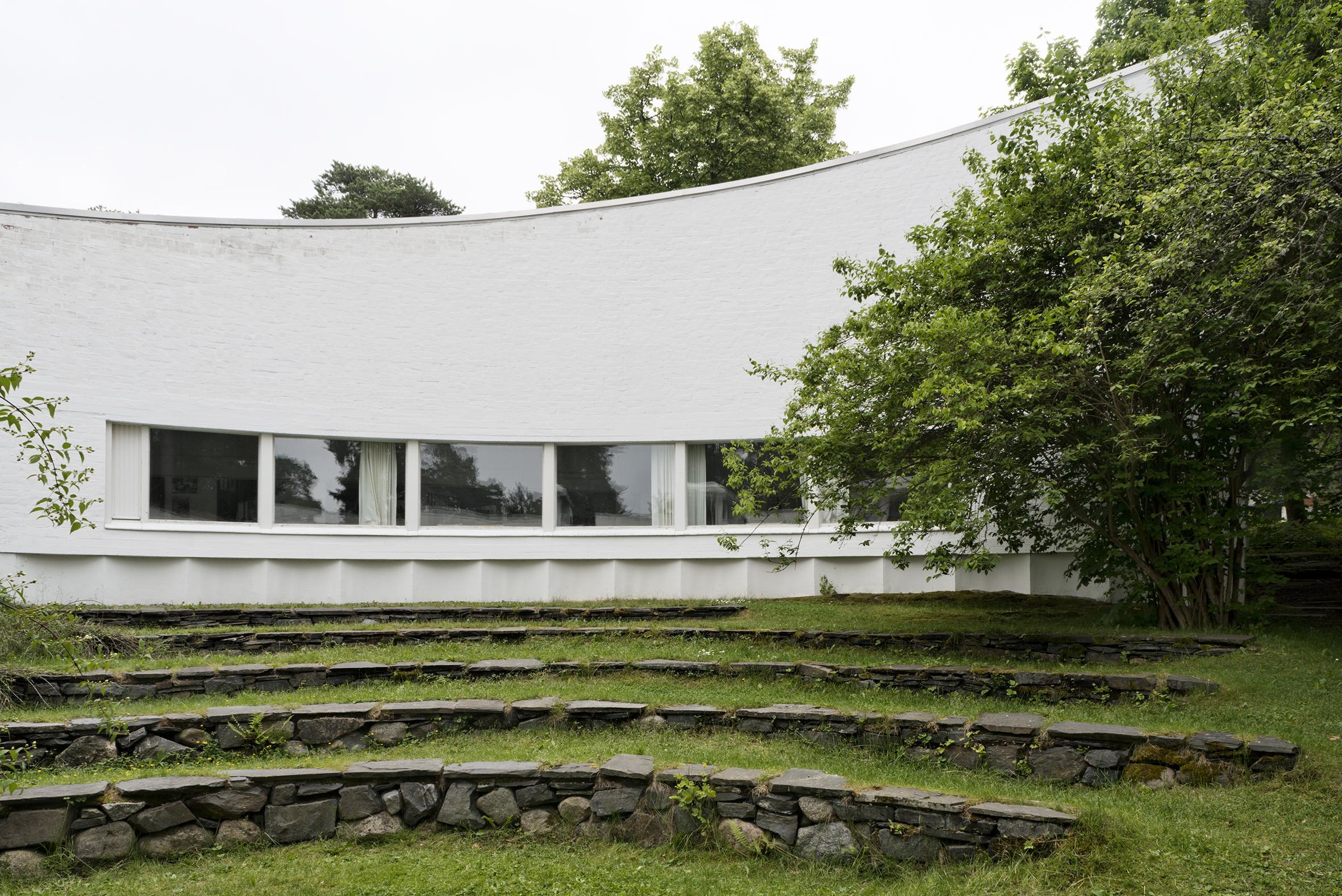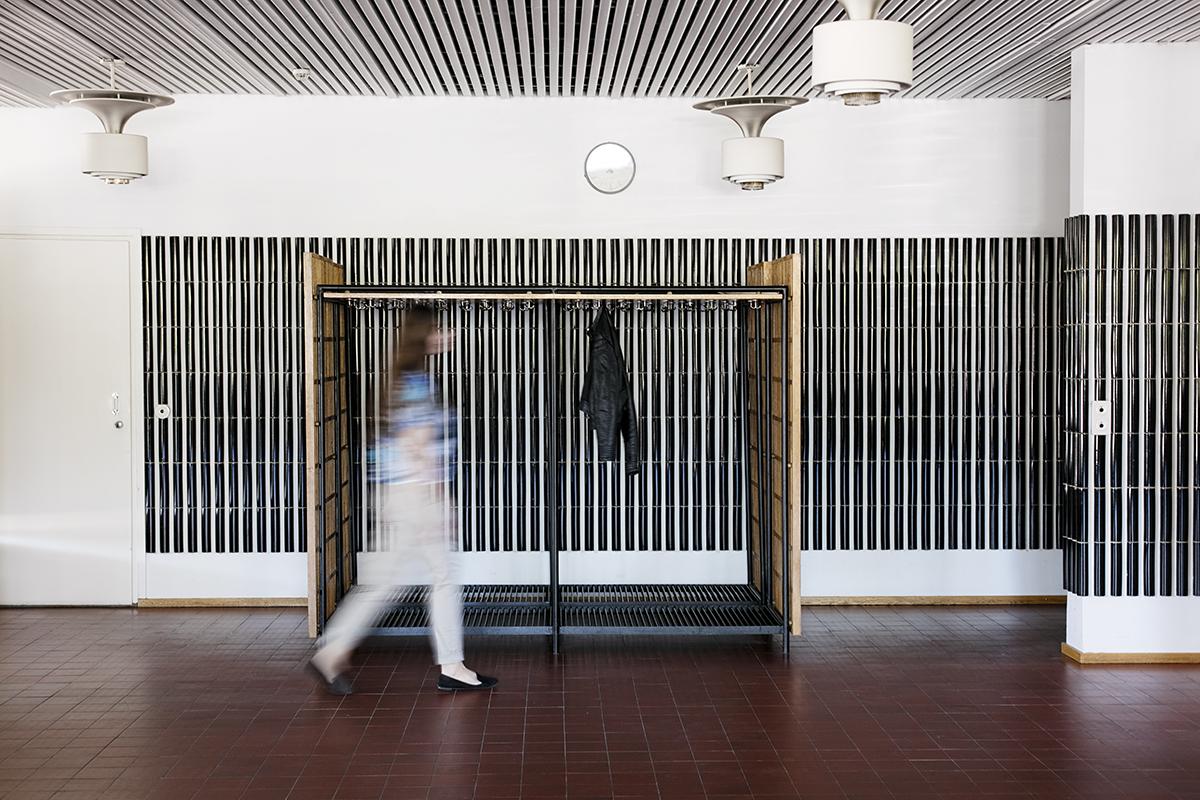
Grasp the essence of Alvar Aalto’s architectural philosophy in Seinäjoki and Alajärvi.
Here, Aalto’s Civic Centre stands as a symphony of modernist style, where architectural melodies play in perfect harmony with the rhythm of community life. Discover buildings that transcend aesthetics, shaping the very spirit of public spaces. From the embracing arms of the town hall to the spiritual sanctum of the church, each structure pays homage to Aalto’s belief in architecture as a transformative force, reshaping our collective experience of community in space.
Tour in brief: In a day and a half, this tour explores Seinäjoki’s Aalto Centre, an architectural ensemble that’s within easy reach from the train station. Engage in a guided tour that inspires with its beauty and historical significance, creating a unique blend of cultural experience and modern architectural wonder.
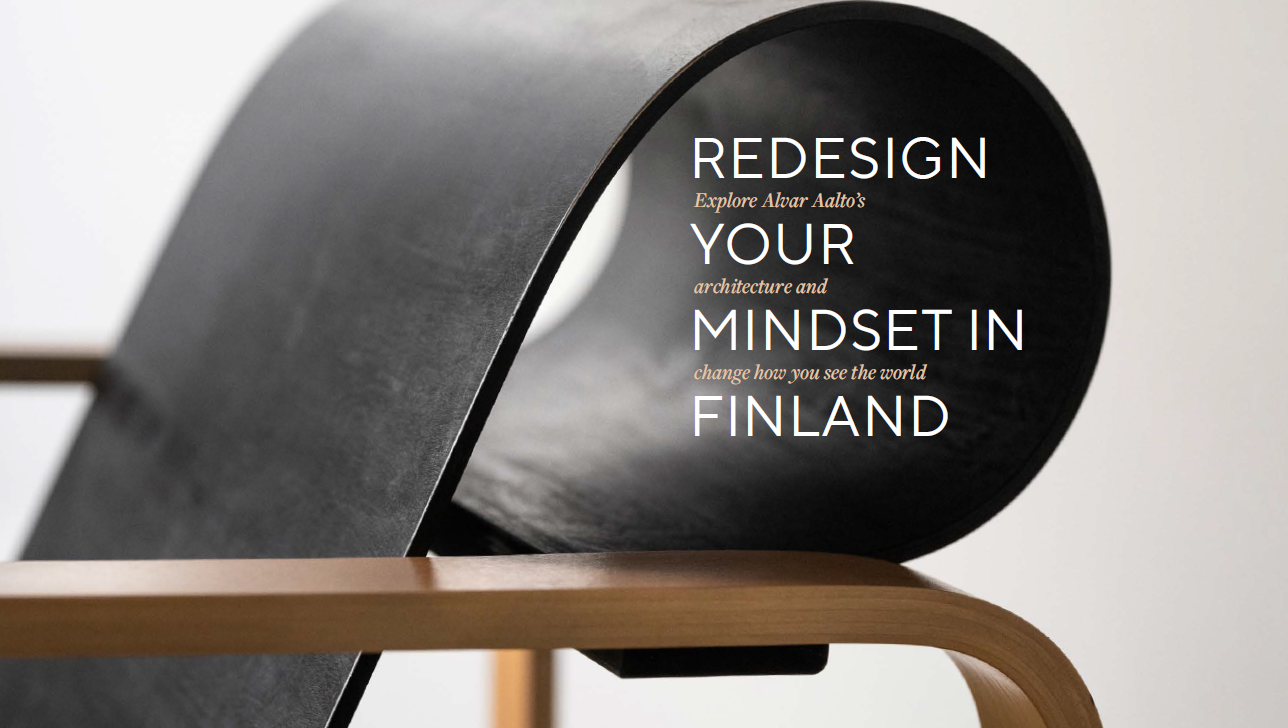
Welcome to the Alvar Aalto Route – a journey where the magic of architecture and design comes alive, inviting you to see the world through a redesigned lens. Alvar Aalto (1898–1976), the visionary of modern architecture, shaped spaces with a profoundly human approach. His creations are more than buildings; they are experiences that resonate with the soul. Scattered across Finland and beyond, they serve as gateways to a reimagined world.
In 2021, this extraordinary route was honoured with the prestigious certification as a Cultural Route of the Council of Europe, affirming its role in the rich tapestry of European heritage. The Alvar Aalto Route offers more than a journey through architectural masterpieces—it extends a warm invitation to immerse yourself in a space where design, nature, and the human spirit converge in harmony.
This catalogue is your guide to a curated collection of Aalto experiences. Each package is a thoughtfully designed adventure into Alvar Aalto’s world, seamlessly blending his iconic architecture with the unique flavours of local life. From serene Finnish landscapes to vibrant European Aalto destinations, these journeys offer something for everyone. Whether you’re a first-time visitor or a devoted admirer of Aalto’s work, we warmly welcome you—and continually seek new partners to enrich the experience.
Step into spaces that defy the ordinary, where every curve, every material, and every detail tells a story that redefines how you perceive the world around you. This is the essence of the Alvar Aalto Route: an invitation to rediscover beauty, functionality, and the interconnectedness of life through the lens of one of modern architecture’s greatest minds.
Let us help you navigate this adventure and uncover how Aalto’s vision can transform not just physical spaces but also the way you view the world itself.
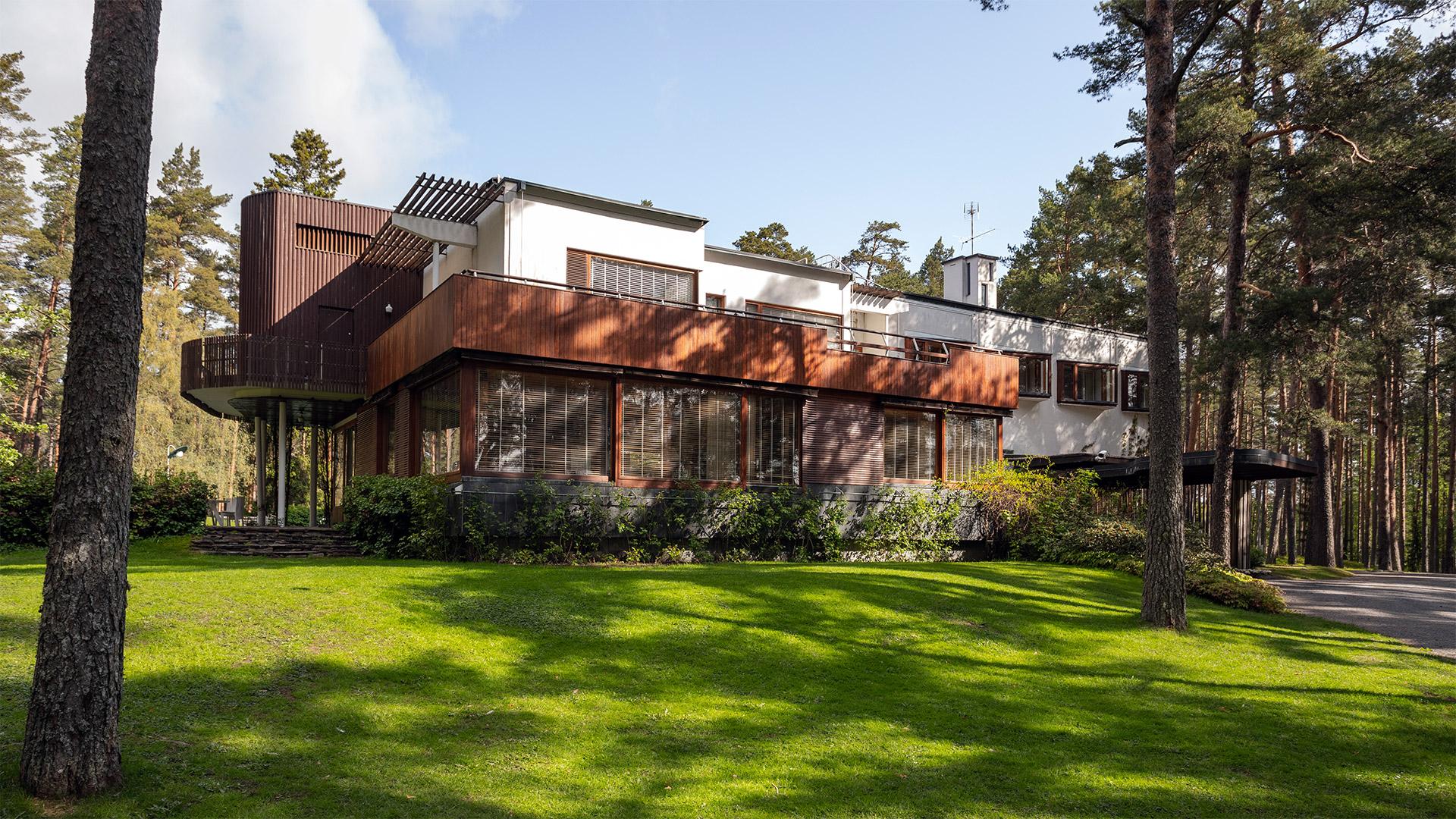
In Noormarkku, Pori, you’ll experience a comprehensive journey into architecture and design through guided tours of the world�renowned Villa Mairea and Ahlström’s unique historical industrial area with its museums.
This experience is a feast for the senses, combining culinary delights at Noormarkku Works area with a
journey through history, design, and architecture. Villa Mairea’s aesthetic brilliance is a tribute to Aalto’s
genius as well as the relationship between modern design and natural beauty. In Ahlström’s Noormarkku
works, come and meld culture, architecture, and gastronomy, and ask yourself how architecture can
elevate and redefine the cultural landscape.
Villa Mairea and the Ahlström Ironworks are a harmonious marriage of art, design, and industry. Designed by Alvar and Aino Aalto, Villa Mairea is an architectural gem amidst a pine forest, while the Ironworks area invites you to stroll through a living museum of industrial heritage. Together, they offer a rich cultural experience highlighting the creative synergy of Aalto’s design and Ahlström’s industrial legacy.
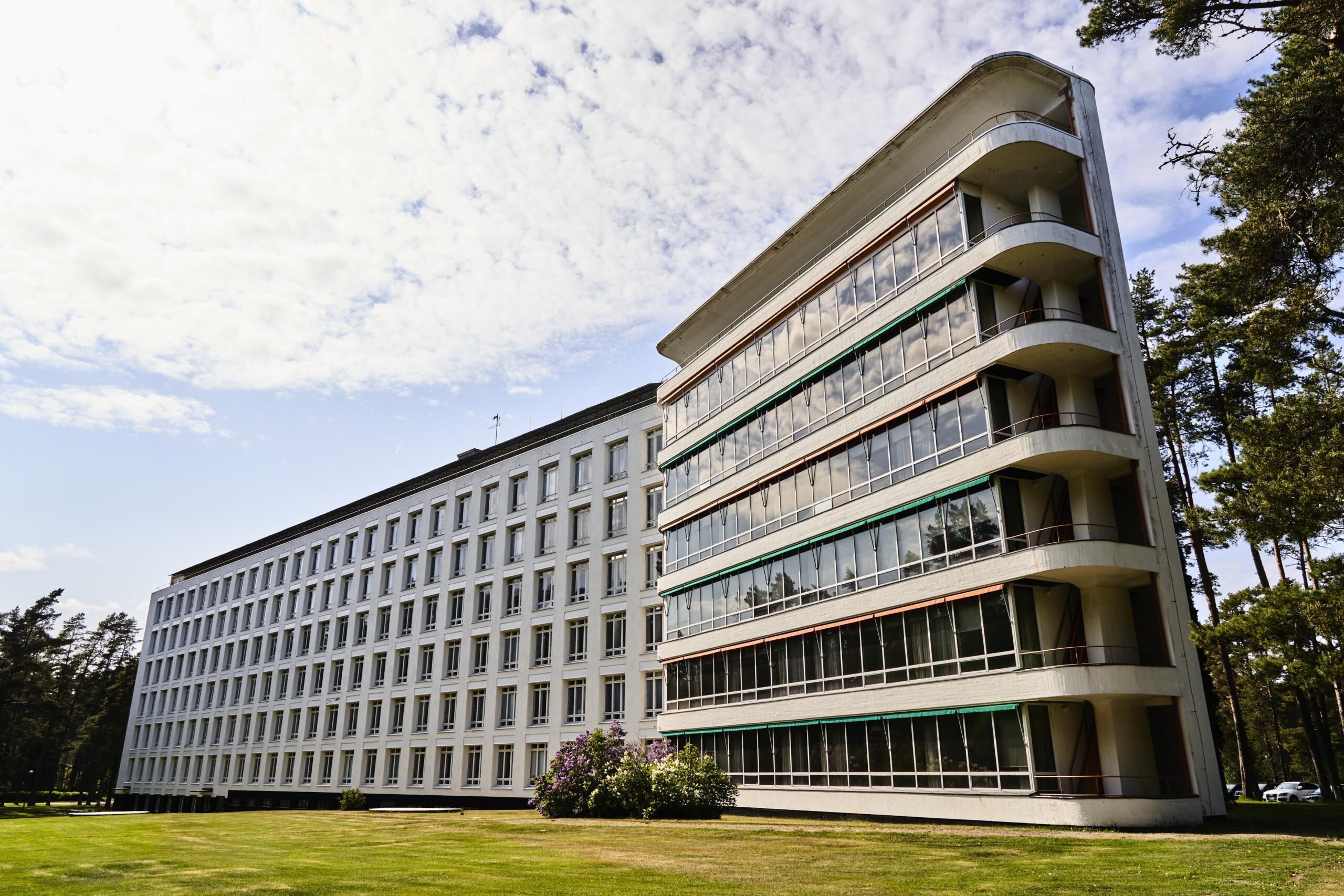
Paimio Sanatorium, Alvar and Aino Aalto’s international breakthrough design, is one of the most renowned buildings in Finland. Completed in 1933, it is a masterpiece of humane modernism and a true gesamtkunstwerk. Designed as a tuberculosis sanatorium and having served as a general hospital, Paimio Sanatorium has now entered a new era of the philosophy of well-being.
Enclosed by a vast forest of tall pine trees, the iconic site invites you to unwind in its tranquil ambiance. Explore the corridors, sense the luminous light and colors of the Sanatorium as you take a guided tour, discovering the stories of the past. A hike through nature trails or outdoor meditation, Paimio Sanatorium offers the perfect retreat to rejuvenate senses. Lenghten the stay by accommodating on-site, enjoy the local cuisine and various spaces of the Sanatorium.
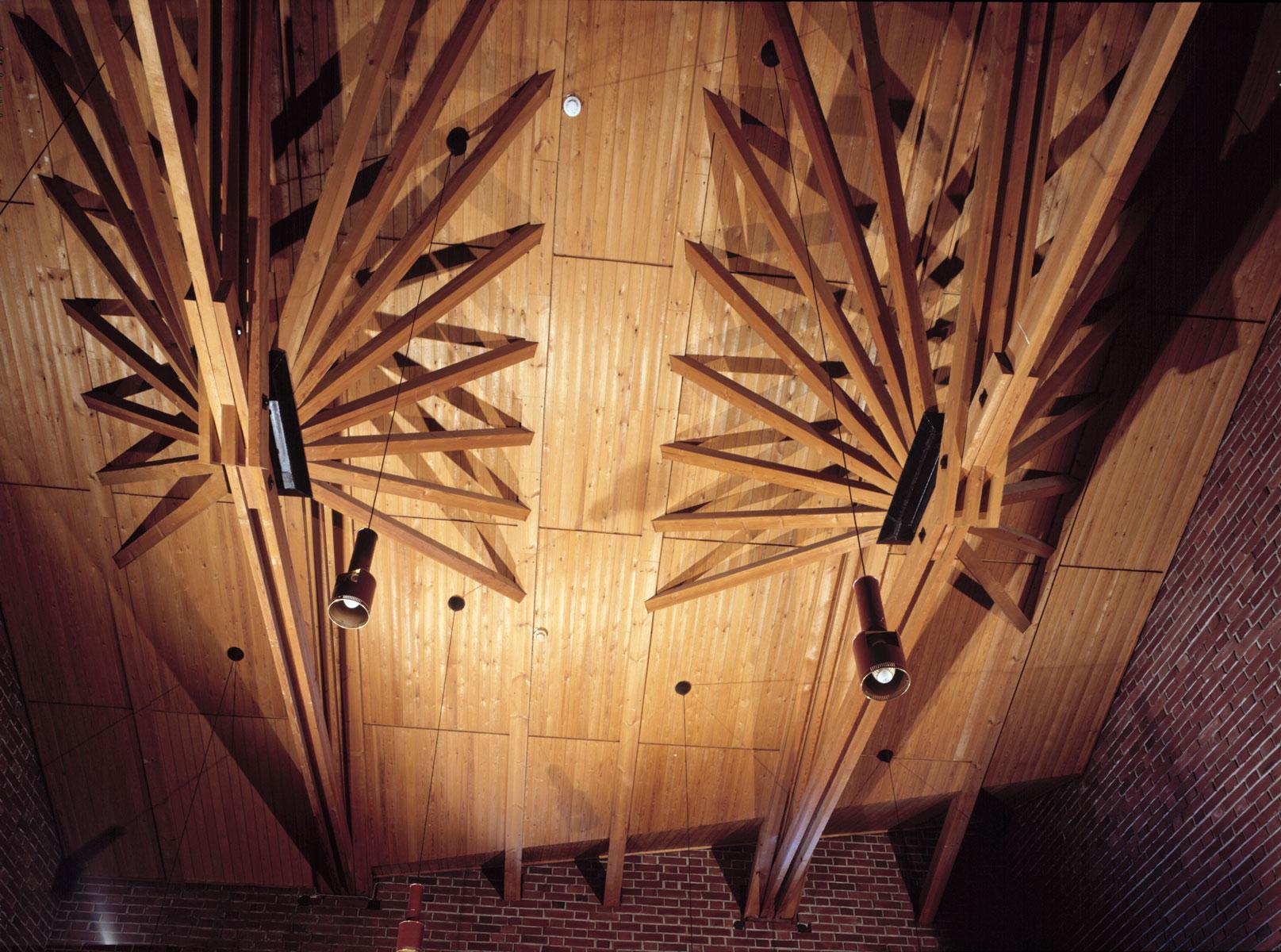
Explore this architectural gem where Aalto’s vision of form and function is realised in each minute detail.
This tour offers more than a simple walkthrough—it invites you to stay and soak in the community spirit that the building embodies. As you explore this space, you have the unique opportunity to extend your
visit with an overnight stay, allowing you to fully immerse yourself in the unflustered landscape that inspired Aalto’s design and experience the communal essence of the thinking behind his designs.
Tour in brief: Join us at the Säynätsalo Town Hall, a cherished historical gem reflecting Alvar Aalto’s brilliance. Uncover the stories and facts of Alvar and Elissa Aalto during our guided tour, which is
suitable for all ages and backgrounds.
Why not extend the experience with an overnight stay? That way, you can create an even deeper connection with this iconic masterpiece and live like a local in our warm, inviting atmosphere.
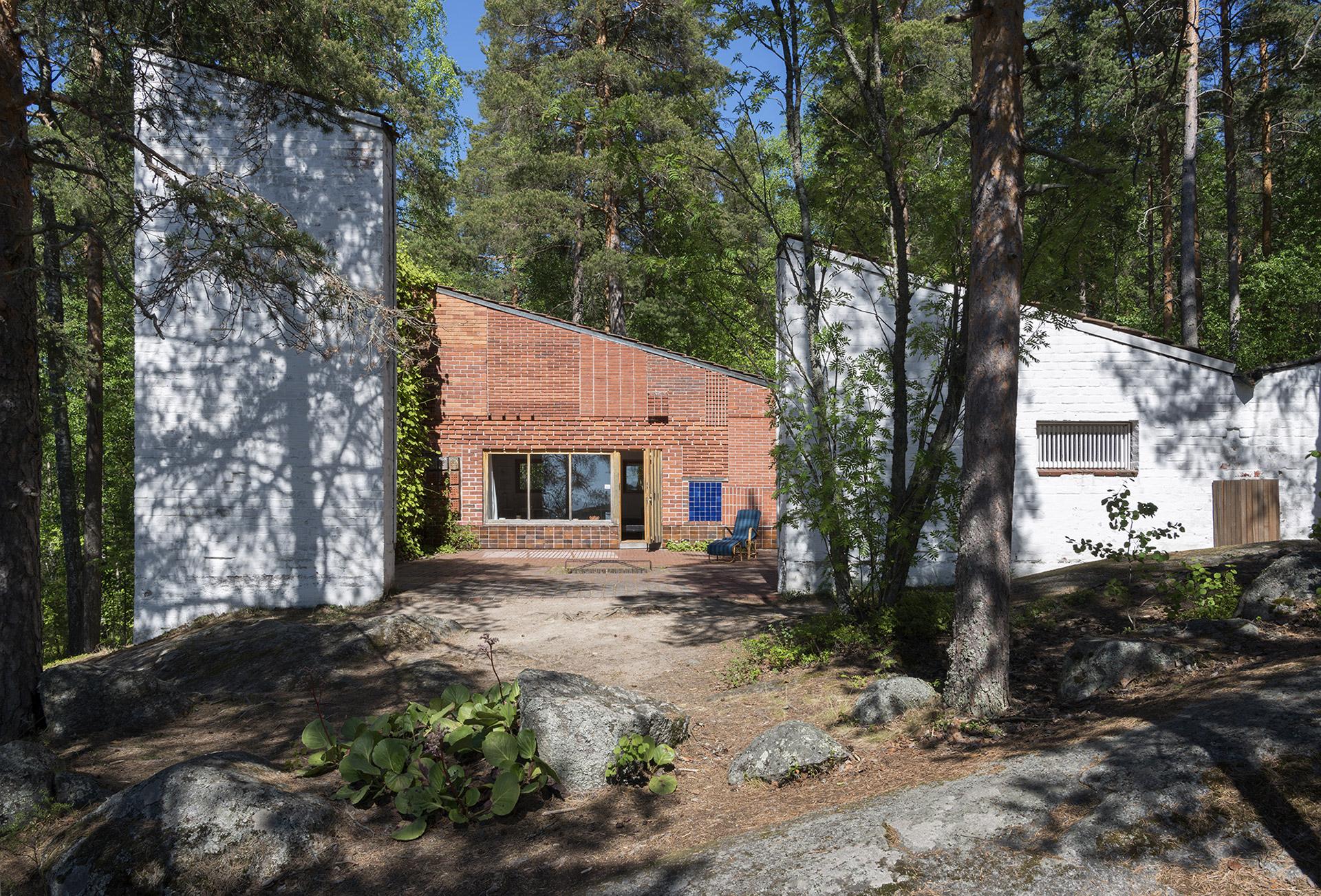
Embark on a country-spanning odyssey to discover the heart and soul of Alvar Aalto’s architectural legacy. Begin in Turku, where Aalto’s modernistic early works stand as monuments to his evolving style. Find yourself in Helsinki, where the iconic Finlandia Hall and the Academic Bookstore exemplify his philosophy of form following function. In Jyväskylä, the Aalto2 Museum awaits, a space where Aalto’s genius blurs the lines between practicality and artistry.
Journey to Säynätsalo to admire the Town Hall, a beacon of community and design, and explore the Muuratsalo Experimental House, a canvas of Aalto’s daring creativity. Venture to Kauttua Ironworks in Southwest Finland, a magnificent home to six Aalto structures, including the Terraced house and riverside sauna. Finish up at Villa Mairea, a residential marvel that harmonises with the natural world. This tour is a true tribute to Aalto’s vision, a chance to see the built environment through his transformative lens.
This five-day tour commences in Turku with Aalto’s first modernist works and progresses throug Helsinki’s iconic landmarks, such as the Finlandia Hall and the Academic Bookstore. The tour then ventures to the historically rich Kauttua Ironworks, followed by visits to Säynätsalo Town Hall and the Muuratsalo Experimental House. The excursion concludes with a tranquil stay at Villa Mairea, a serene
architectural haven.
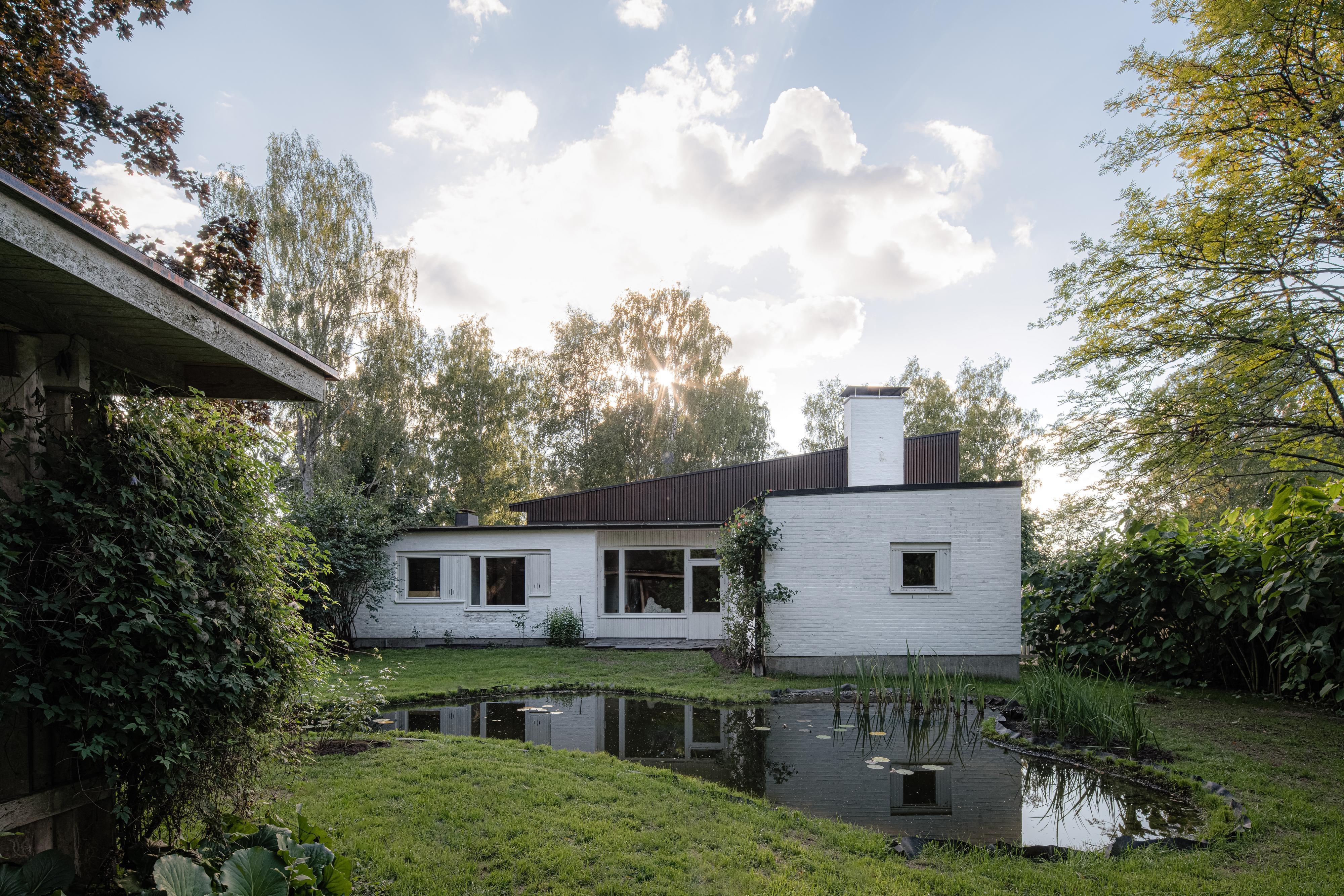
Retreat to the picturesque Raseborg, where architecture and artisanry coalesce with the splendour of nature.
Begin your escape in the coastal charm of Ekenäs, witnessing Alvar Aalto’s smallscale architectural wonders like Villa Skeppet. Then, journey to the historic Fiskars Village, a cradle of Finnish art and design. Here, amidst the legacy of ironworks, discover the vibrancy of local craft, and let each boutique and
workshop unveil a story of tradition and innovation. This retreat is an invitation to experience the integration of creativity and natural beauty.
Tour in brief: Redesign your retreat with Raseborg’s unique blend of Alvar Aalto’s architecture, local art, and crafts. Day one immerses you in Ekenäs’ architectural treasures like Villa Skeppet, Chappe and local culinary delights. Day two invites you to the artistic Fiskars Village, a historic ironworks site now bustling with workshops and boutiques.
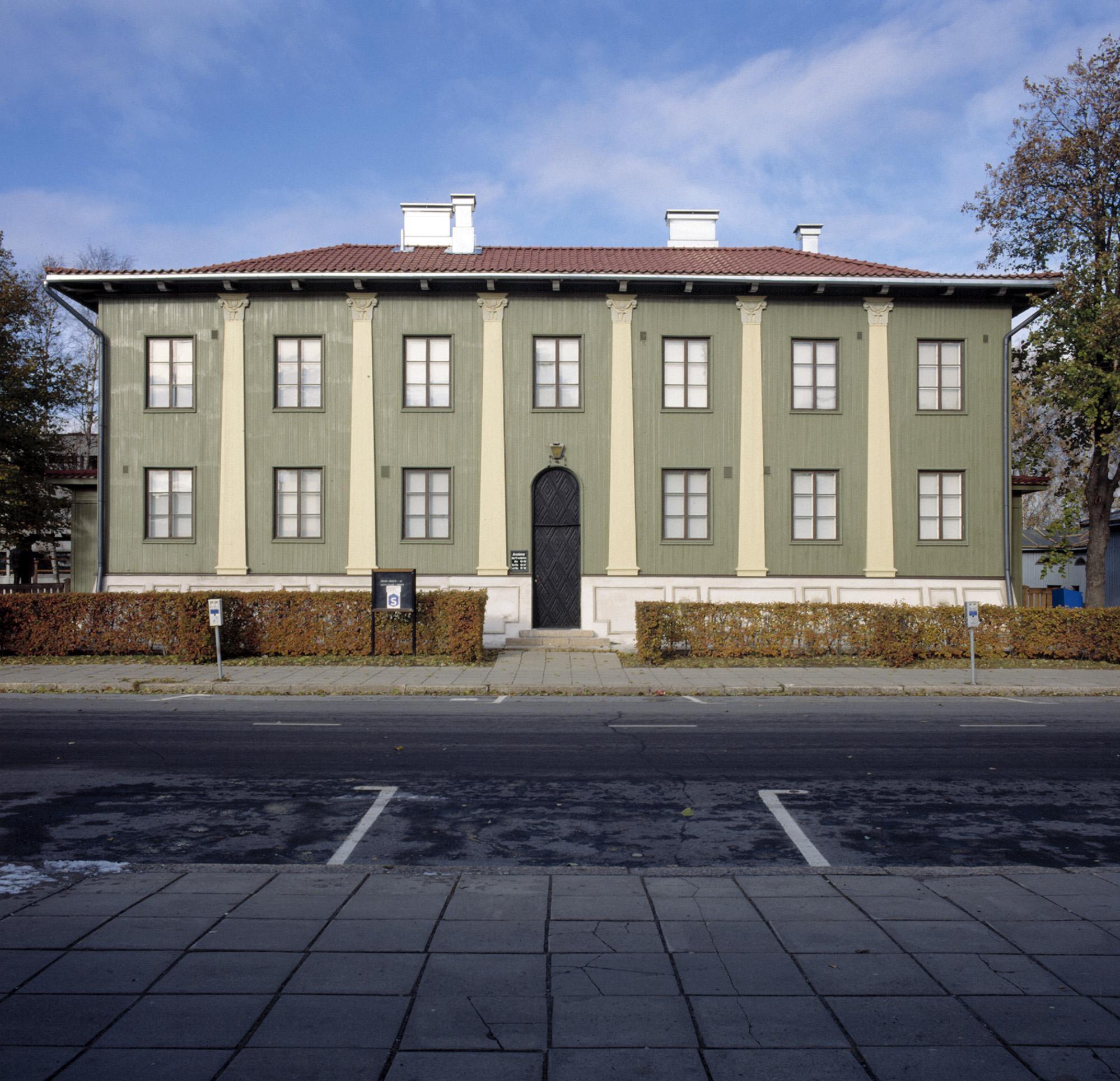
The Defence Corps building was commissioned by the Southern Ostrobothnia Defence Corps, which used the three-storey building with mixed functions as its headquarters. The main building was originally used as offices for the Civil Guard of South Ostrobothnia and the Lotta Svärd Association. The top tier of the building was in residential use.
The semi-subterranean ground floor, which contains a circular assembly hall, foyer and cloakroom, is built of stone; the office level and the residential storey (at the top with its own access stairs) are of wood. Together with the main building, a separate outbuilding was designed and erected on the other side of the courtyard. The ground floor of this two-storey building of rendered brick contains a garage, guardhouse, arms depot, sauna, and laundry; there are four small apartments in the upper storey. An unusual stair arrangement on both sides of the arched entrance provides separate access to most of the various facilities. One of the short sides of the courtyard is enclosed by a low wooden storehouse, designed some years later. The courtyard itself was intended as a drill and parade ground.
After the Second World War the building was re purposed for other uses. Since then many tenants have been operating in the building, including The Federation of Finnish youth association, a school and a travel agency. Nowadays the building is managed by the Provincial Museum of Southern Ostrobothnia. Currently it houses the Civil Guard and Lotta Svärd Museum. The main building holds museum exhibition and meeting spaces, an info booth and museum shop. The outbuilding has more exhibition spaces and a administration space for the museum.
The Defence Corps building has been preserved in its original condition and it’s buildings and their yard have also been protected under the law regarding building protection since 2002.
The building represents refined neoclassicism and functionalist features as well as Ostrobothnian construction heritage. The building’s unusual stair hall, facade pilasters, and assembly hall painted in Pompeiian style make it one of the chief works of Alvar Aalto’s Neo-Classical period. Some part of the decorations in the buildings, including furniture, lamps and ornament details were also designed by Aalto.
Aalto originally designed a loggia-like staircase for the end entrance, but it was not built.
The Suojeluskuntalainen statue, work by artist Pentti Papinaho is located in the yard of The Defence Corps building.
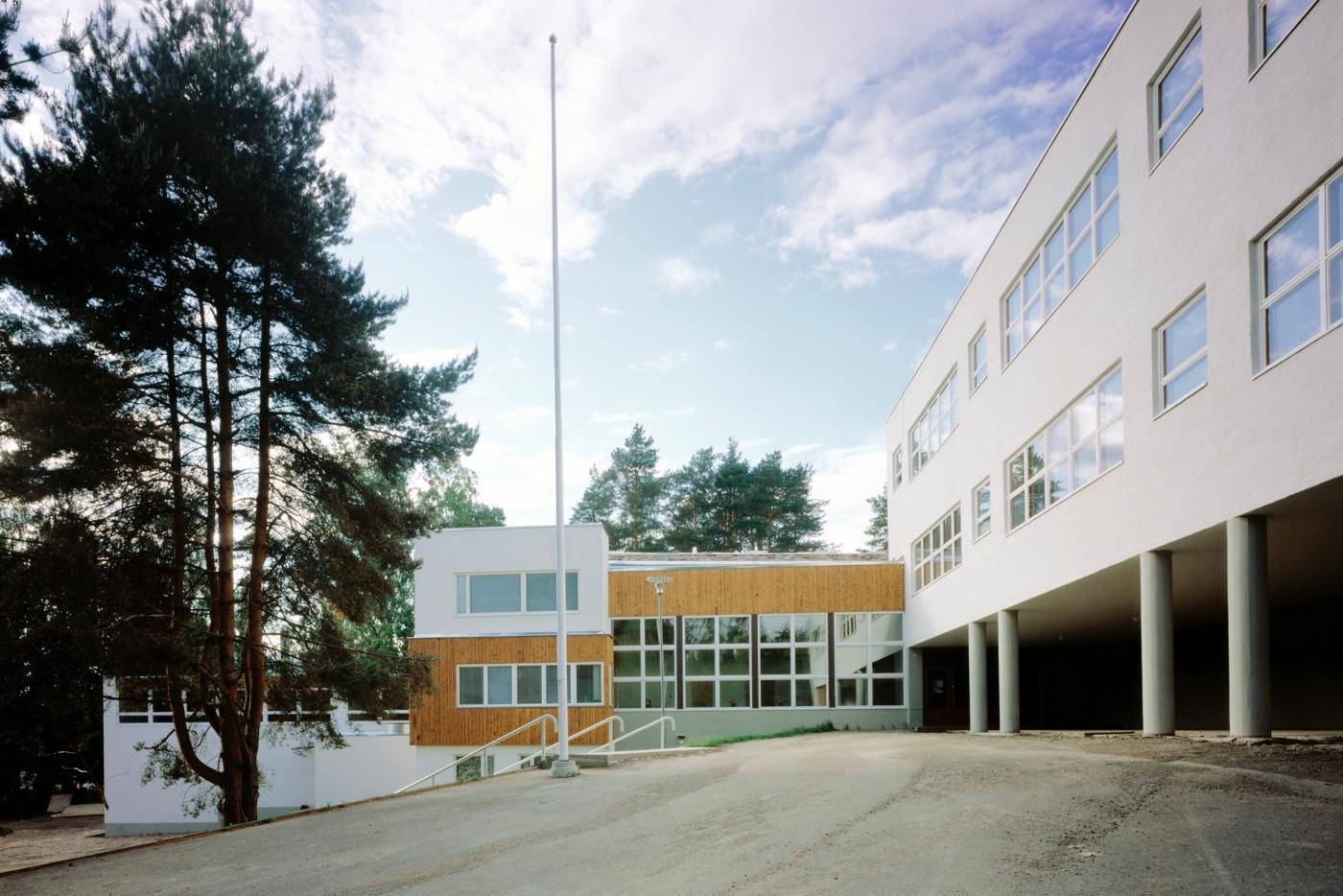
Alvar Aalto’s most prominent works in Kouvola are located in Inkeroinen within the area of the Ankkapurha Culture Park. The buildings designed by Aalto in Tehtaanmäki, Inkeroinen date back to 1937 to 1956. These include the industrial buildings of the Anjala Paper Mill and the Tampella Co. Housing Area, including Rantalinja semi-detached houses, Tervalinja terraced houses, three engineering personnel houses and housing blocks for the workers of the mill. While in Kouvola, also make sure to check the Kasarminmäki gateposts, which the young architect designed for the garrison area when he was doing his military service.
The area is complemented by the Tehtaanmäki Primary School finished in 1940 and the Karhunkangas housing area of single-family homes, where most of the residential buildings were completed in 1938. The Tehtaanmäki Primary School is the only elementary school designed by Alvar Aalto that is still in its original use. The town plan designed by Aalto in 1937 covered the entire centre of Inkeroinen, but only the Karhunkangas area and the area adjacent to the mill were ever implemented.
The centre of Kouvola is also an interesting attraction to architecture enthusiasts. The administrative centre of Kouvola representing modernism is a nationally significant built cultural environment catalogued by the National Board of Antiquities. The Town Hall of Kouvola (Bertel Saarnio, Juha Leiviskä, 1964 to 1968, 1969) is an outstanding work of modern architecture classified by the international DOCOMOMO organisation.
The renovated pedestrian street Manski with its shops and cafeterias beckons you to have a cup of coffee and a rest. Those craving for culture make their way to explore the high-standard exhibitions of the Kouvola Art Museum belonging to the Poikilo Museums, and the museum building flooded with light.
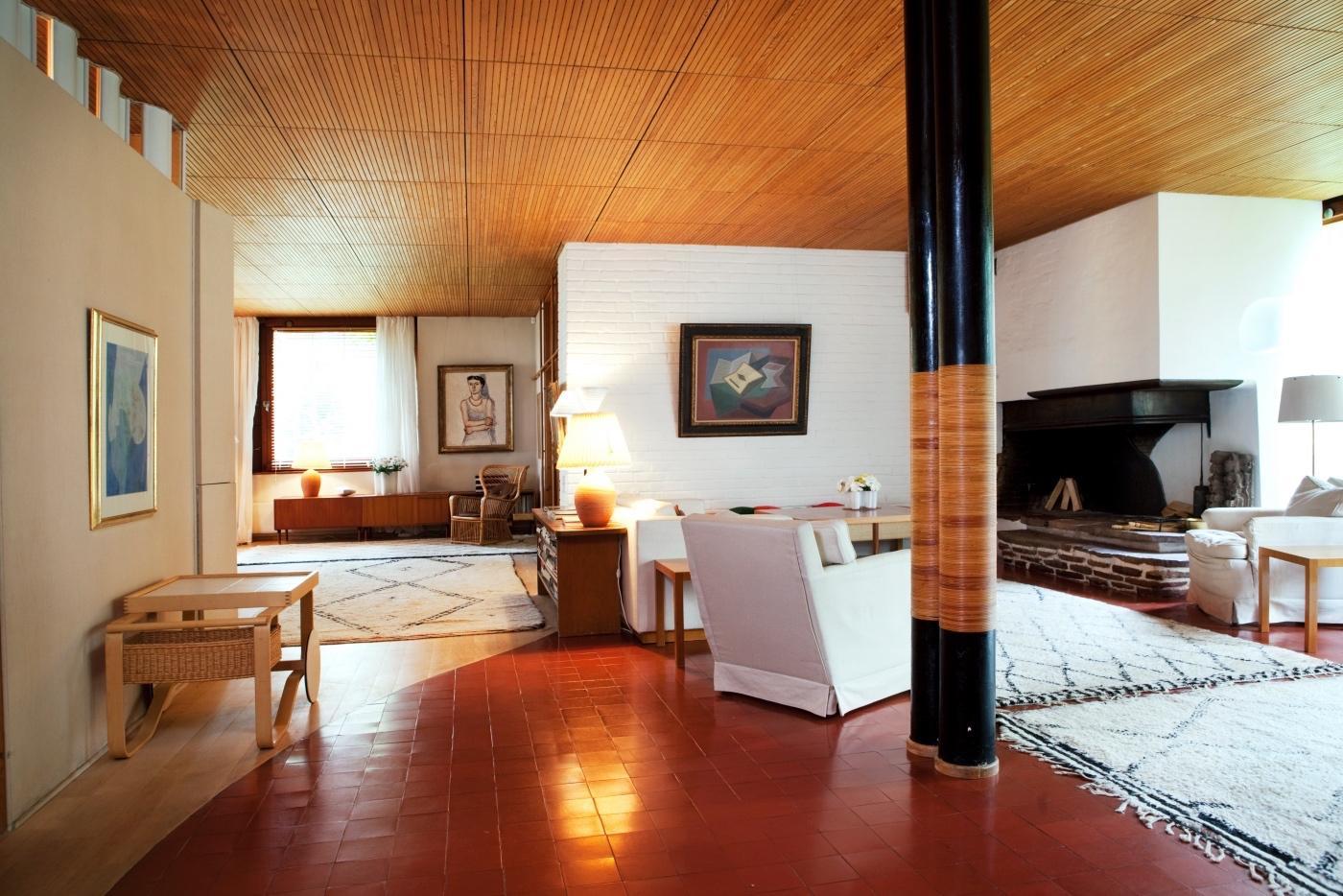
Villa Mairea in Noormarkku, Kauttua Terraced house and Paimio Sanatorium remain as homes, where everyday life merges with architecture and iconic design furniture. Well-being stems from the pine forests and riverside sauna. Set out to experience living as envisioned by Alvar Aalto!
This tour in the South West Finland takes you back in time and presents you the masterpieces of modern architecture. At the Paimio Sanatorium you can learn about Aalto’s modernist ideas healthy environments, at Kauttua you can see the Terraced house, that Aalto designed for residential use.
Villa Mairea presents you the beautiful private home of timeless decor. In the historical Noormarkku and Kauttua Works of the Ahlström company you can enjoy the picturesque milieu and learn about the history of Finnish woodworking industry.
Delicious lunch and dinner are served at authentic locations. There is also a possibility to bathe in the riverside sauna, a building designed by Aalto.
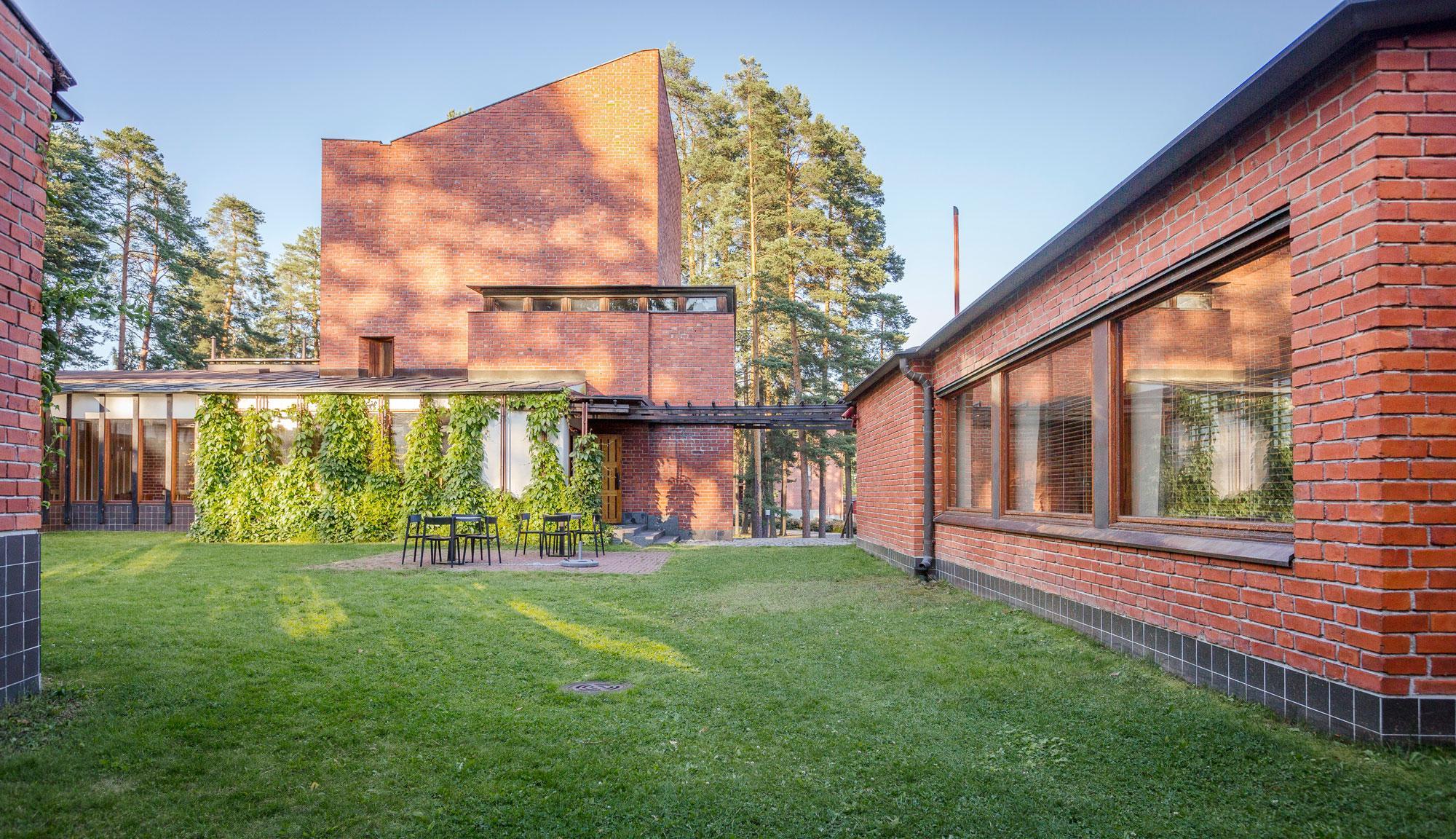
Travel in the sceneries from the various phases in the life of Alvar Aalto, from Seinäjoki via Kuortane and Alajärvi to Jyväskylä in the lake district of Finland. See the master’s birthplace and family grave, some of his most famous competition works as well as his early and later works.
Alvar Aalto designed a world-famous centre of administrative and cultural buildings in Seinäjoki. The landmark of the Aalto centre, the Cross of the Plains Church, soars to a height of approx. 65 metres. The renovated Aalto Library exhibits the world’s biggest private collection of Aalto glassware.
The architect was born in Kuortane and he used to spend his summers in Alajärvi, which is the home for the first buildings designed by the young architect student and for the last creation of Aalto’s office. In Alajärvi, the tour participants can also visit the recently renovated Villa Väinölä, the house that Alvar Aalto designed for his brother. The countryside provided Alvar Aalto with a setting for relaxation during his hectic creative period.
The Jyväskylä region contains more buildings designed by the master architect than any other region in the entire world. Among as many as 28 attractions, you can choose for example the Alvar Aalto Museum, Muurame Church and Säynätsalo Town Hall, which is considered Aalto’s most prominent work in the red brick era. Alvar Aalto also went to school, started a family and launched his prestigious career in Jyväskylä.







